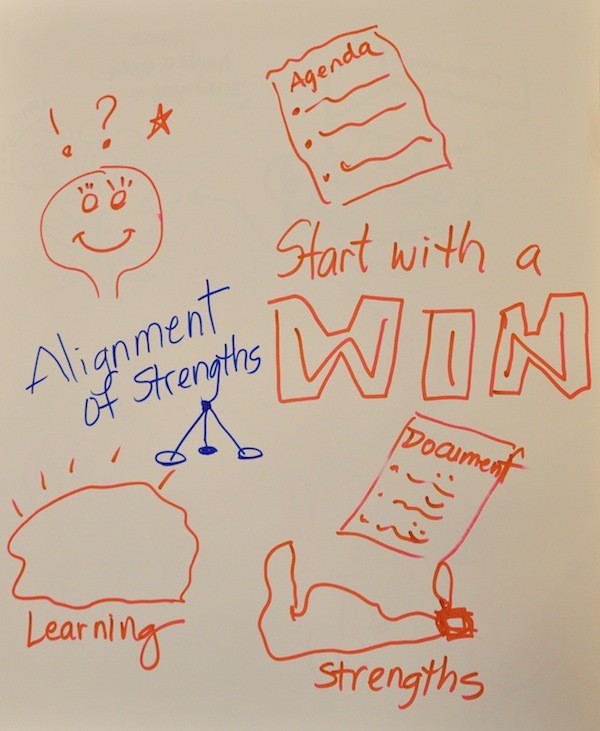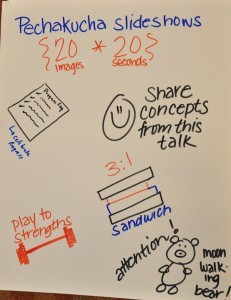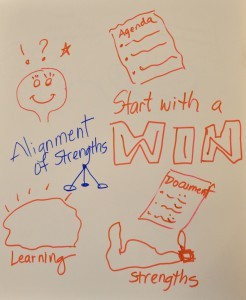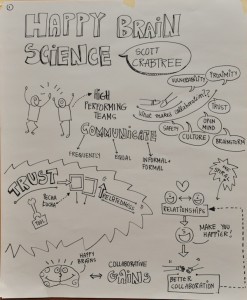
A simple activity to boost the impact of your next presentation.
One of my favorite parts of workshops is applying brain research to get the audience involved and learning more.
An example of this is getting audiences into small groups for discussion of how they will apply what they’ve learned. I try for groups of six or less people, because research indicates that in groups that size, everyone typically contributes. In larger groups, people can hide and be silent. I get them sharing what they will do differently because other data shows that when we share our plans with other people, we are more likely to turn those plans into reality.
I also get groups creating posters of their implementation ideas, to add visual power to the discussion. The science behind these posters is that when we hear a piece of information, three days later we remember about 10% of it. Add a picture and we’ll remember closer to 65%. (I quoted John Medina on this topic in an earlier post on graphic recording.)
I wanted to share some of the great posters created during a recent presentation. To give you some context, this particular workshop was titled “Leading for Collaboration through Happiness and part of the ASTD (American Society for Training and Development) conference, the theme of which was collaboration.
As you can see, you don’t have to be a Michaelangelo to reap the benefit of taking visual notes. It’s not about drawing a pretty picture, it’s about offering your brain an anchor for a memory.
Not sure if your audience would be open to taking visual notes? You don’t have to make it an official part of your presentation; maybe just begin by encouraging them to doodle while they listen.
And of course you can always use this technique when you are on the receiving end of an interesting presentation.
Even better for some is to hire a graphic recorder who’s job it is to document a meeting or presentation. I’ve repeatedly worked with Nitya Wahklu, who does great work. See for yourself:
I am curious to hear your thoughts on this idea. Have you used it, either as a workshop leader or as a participant? Was it helpful? If you haven’t are you considering giving it a try?


